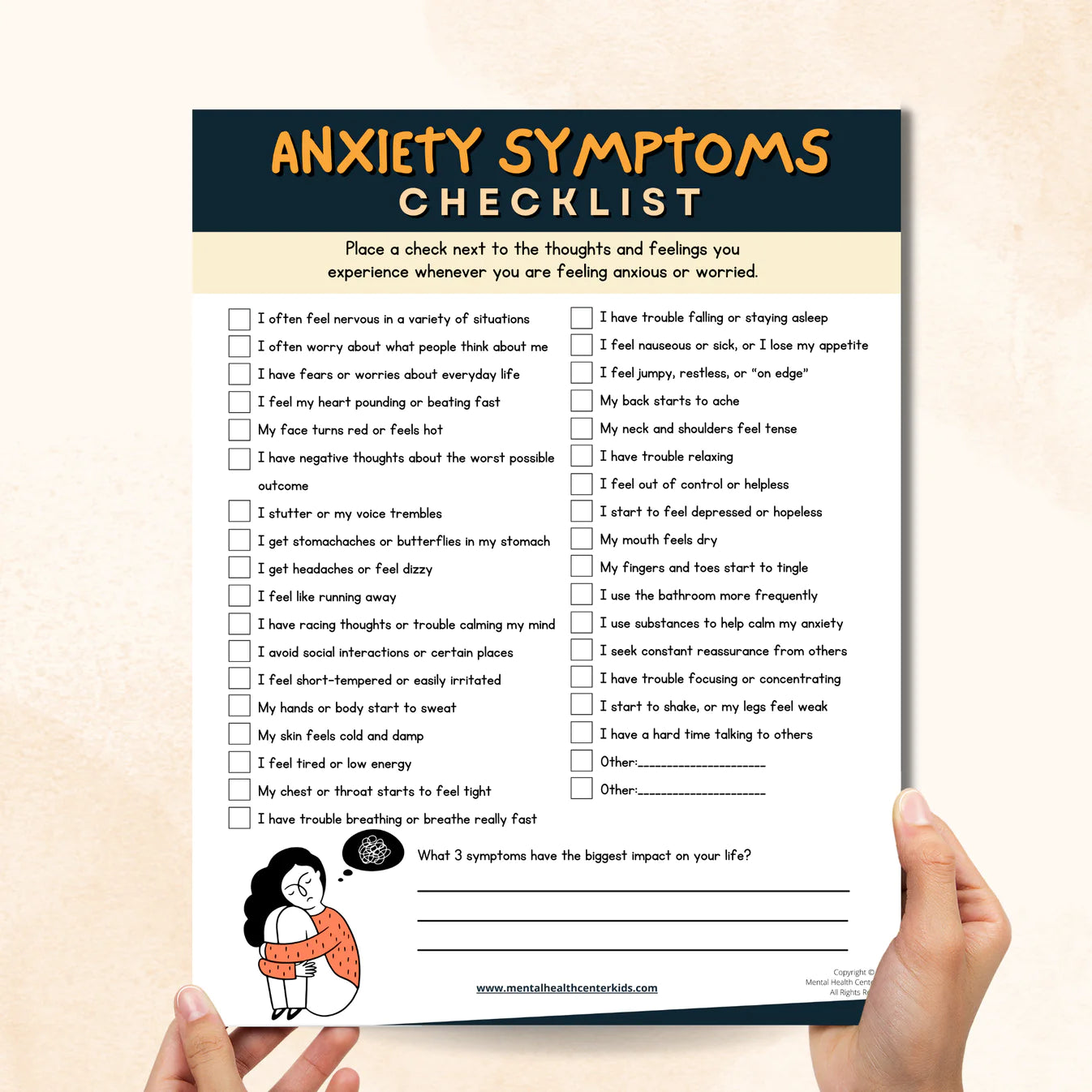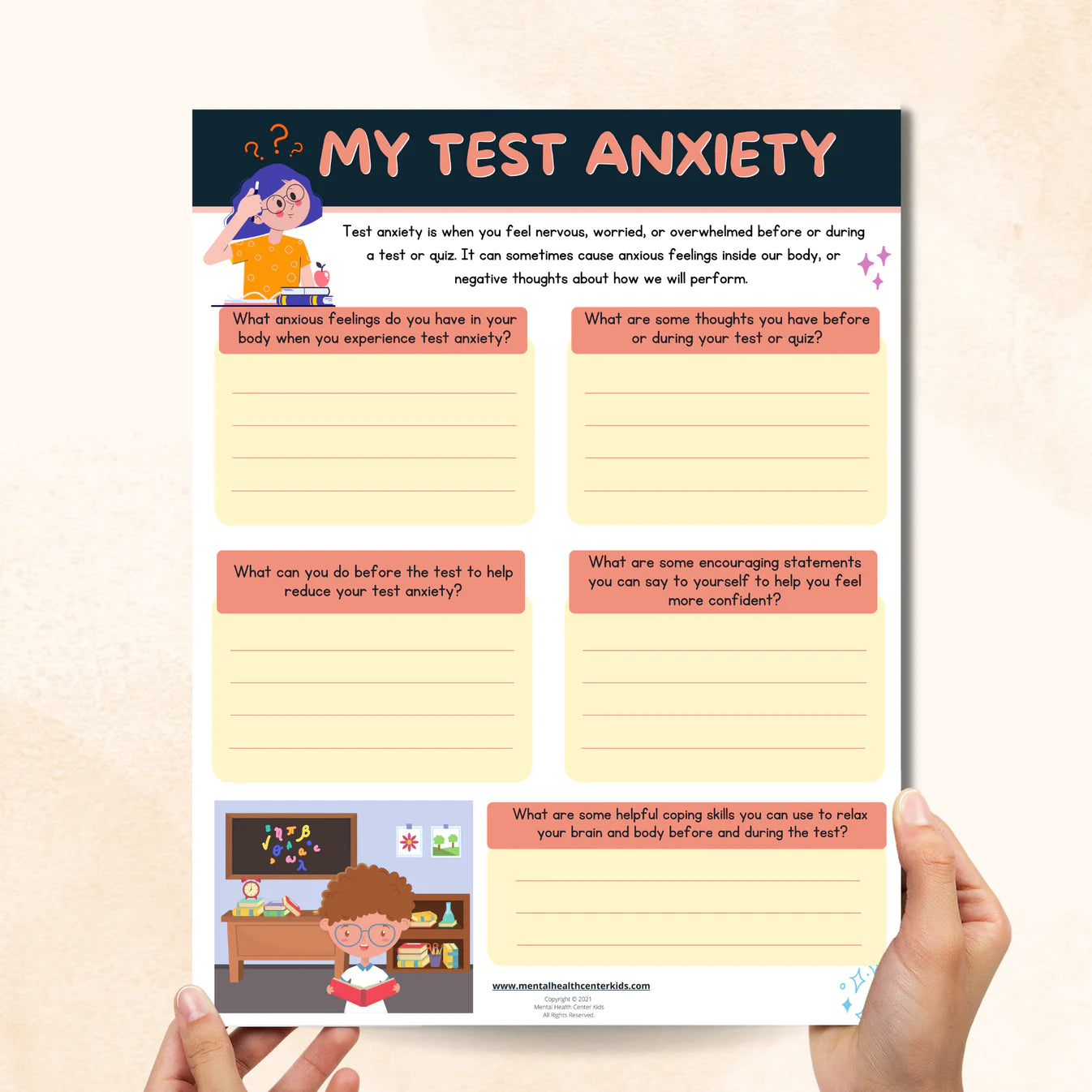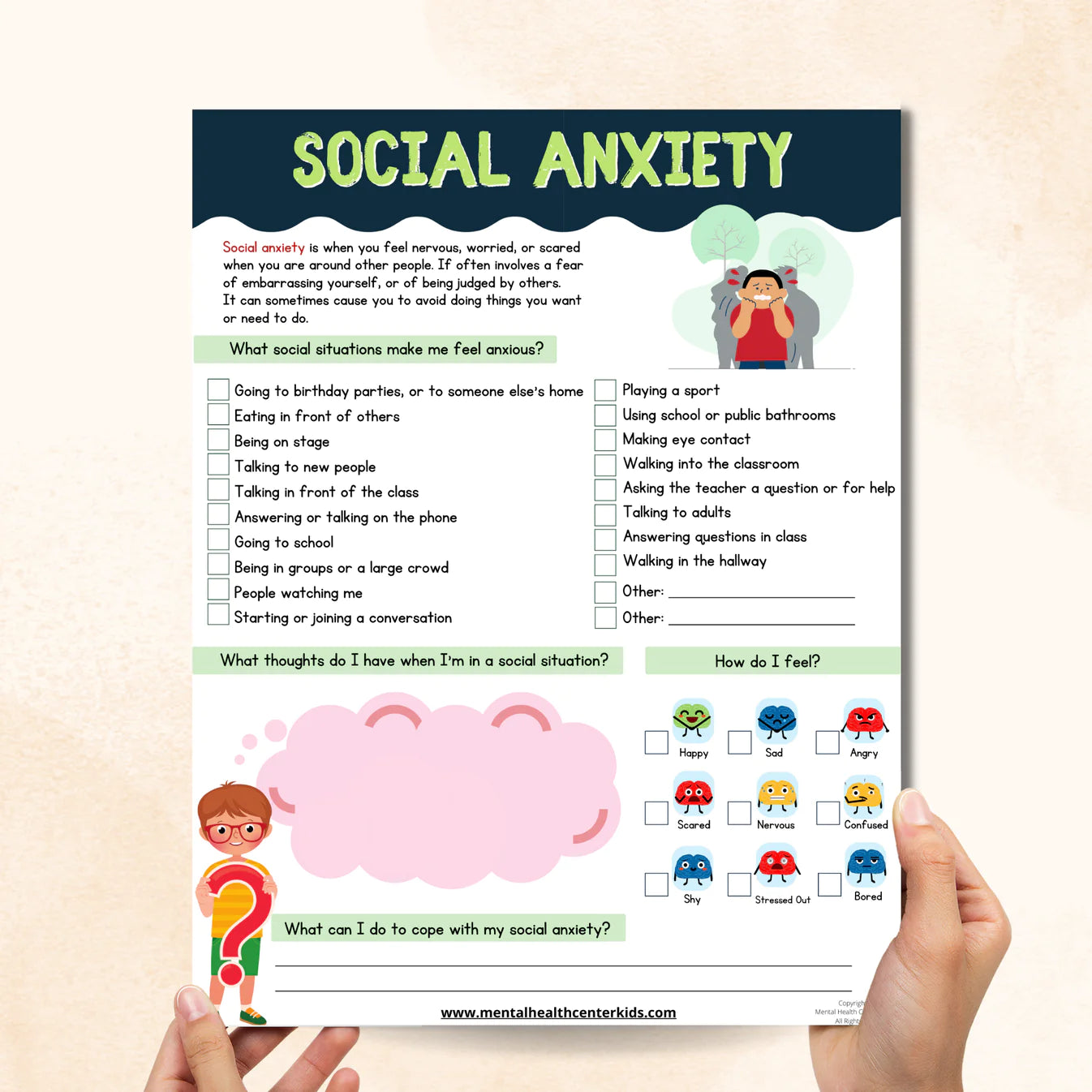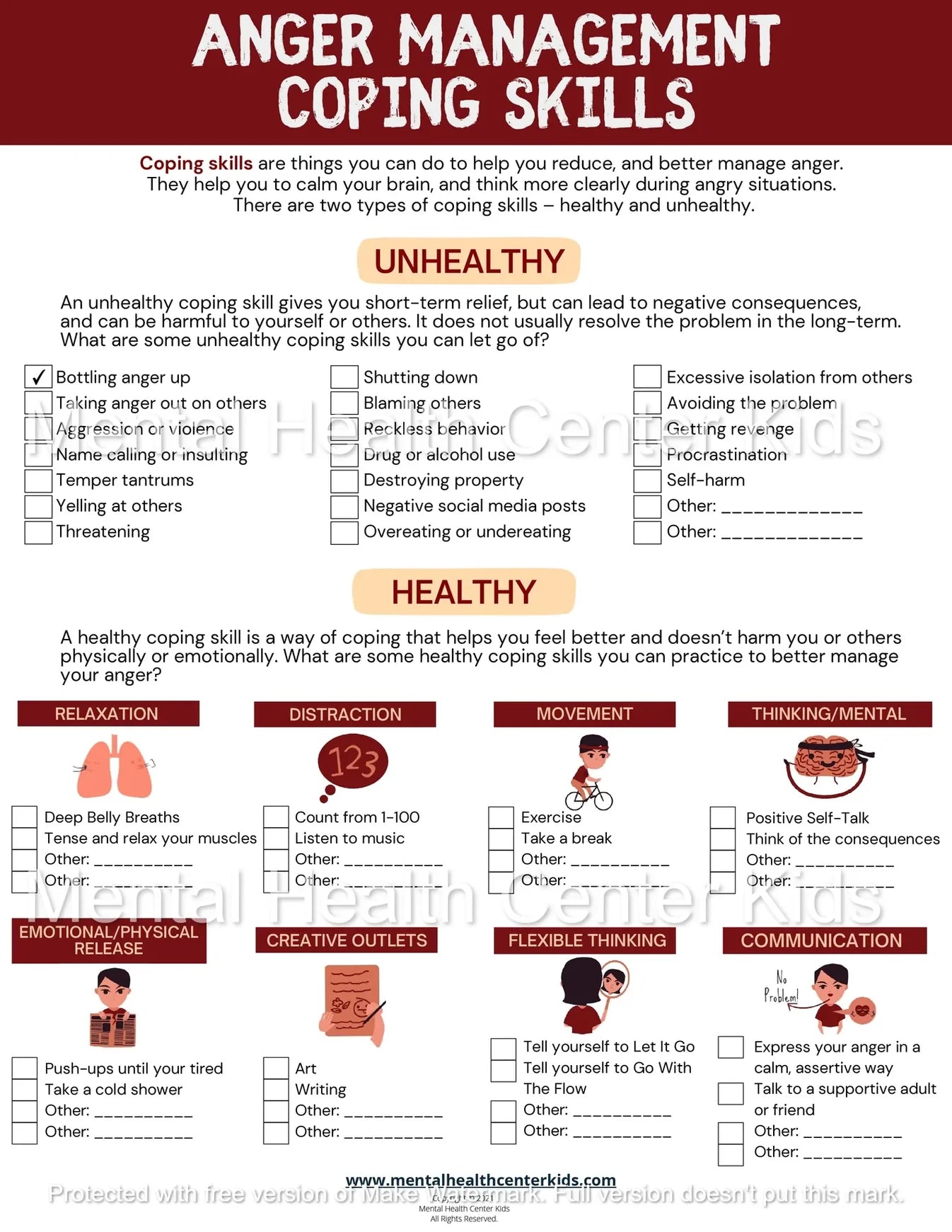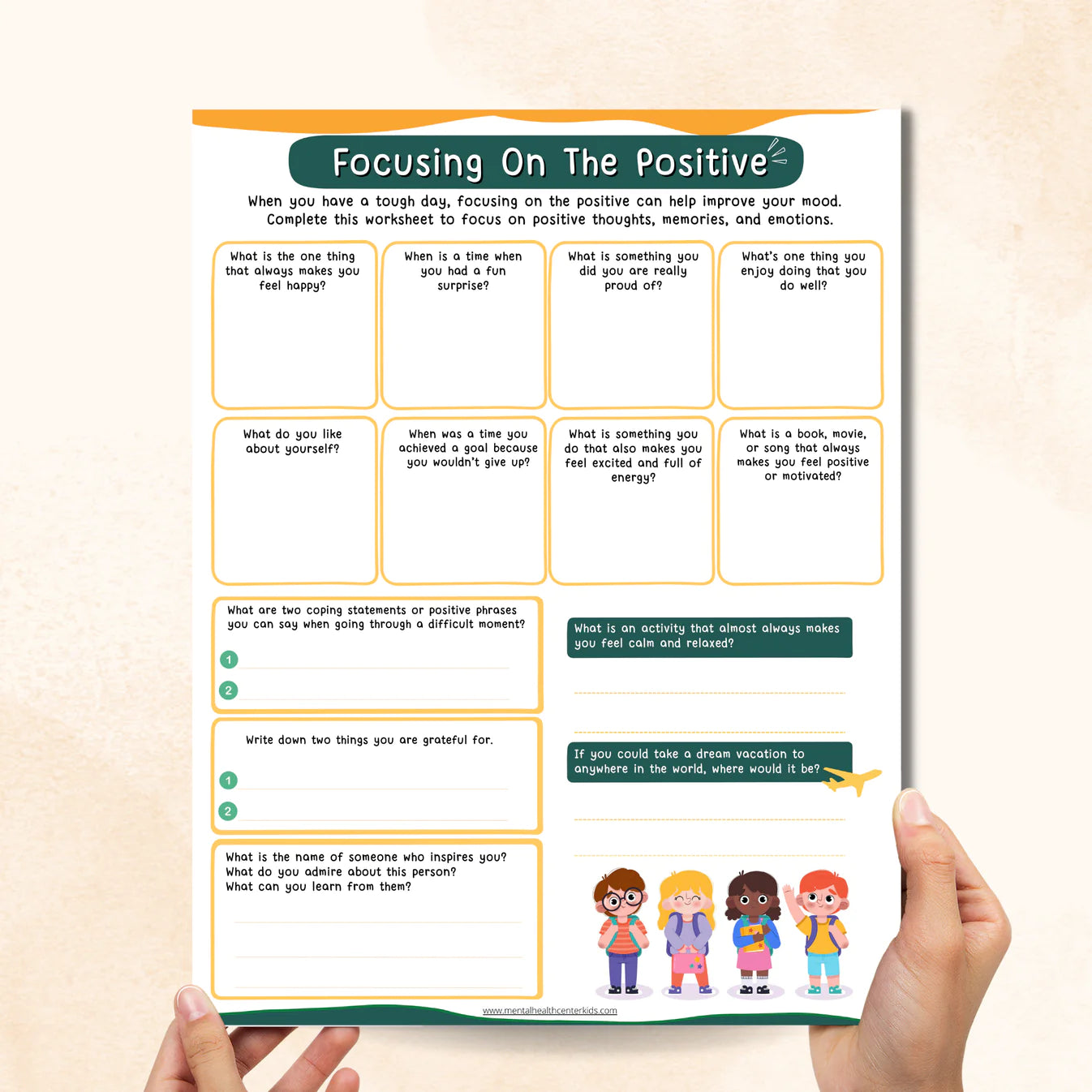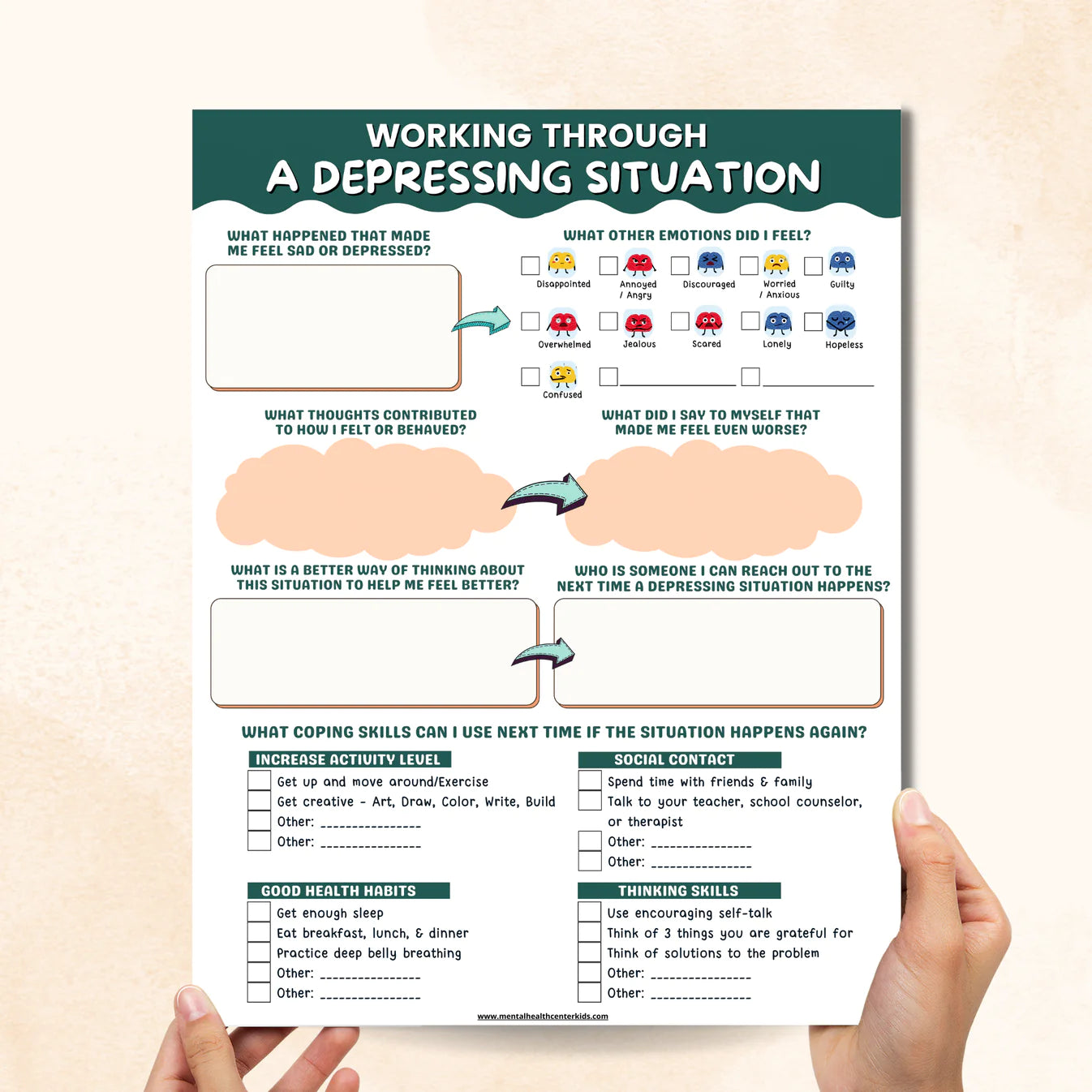|
Key Takeaways:
- CBT worksheets for teens help tackle unhealthy coping mechanisms and equip teenagers to handle stressful situations better.
- By undergoing CBT, teenagers can develop a more self-compassionate view of themselves and develop a more positive mindset.
- Some helpful CBT worksheets for teens include the depressive thoughts breakdown, anger management coping skills, and circle of control worksheet.
|
Adolescence can be a challenging time socially, mentally, and emotionally. Without healthy coping mechanisms, it can be easy for a teenager to fall into self-destructive habits. Fortunately, viable treatment options like CBT can help teenagers tackle mental health issues effectively.
This guide highlights CBT worksheets for teens that parents, caregivers, and teachers can use to help modify negative thought patterns and improve how they cope.
What are CBT Worksheets for Teens?
Cognitive behavioral therapy worksheets for teens aim to improve their problem-solving abilities, encourage open communication, and enhance their emotional regulation skills. They help teenagers understand how their thoughts, feelings, and actions are interconnected and promote overall well-being.
What are the Benefits of Using CBT Worksheets for Teens?
CBT worksheets for teenagers posit many benefits in the behavior modification process. Here are a few advantages of using them:
-
Identifies distorted thinking. CBT worksheets can help teenagers recognize negative thinking patterns and cognitive distortions like black-and-white thinking, all-or-nothing thinking, personalization, and catastrophizing.
-
Provides better coping mechanisms. Using CBT worksheets as part of your teen’s recovery process can help reinforce positive behaviors and modify unwanted coping habits.
-
Encourages accountability. CBT doesn’t “erase” a teenager’s trauma or mistakes. Instead, it empowers them to take ownership of their life and be accountable for their actions, motivating them to improve.
-
Has quick results. CBT is known to deliver quick results, with treatments ranging between five and 20 sessions [*].
10 Printable CBT Worksheets for Teens
If your child is new to CBT, use these 10 printable CBT worksheets for teens to help them maximize treatment.
1. Anxiety Triggers for Teens
When teenagers get caught up in the heat of the moment, it can be difficult for them to identify their triggers and cope with overwhelming emotions. By identifying anxiety triggers for teens, they can become more aware of the warning signs of anxiety or panic. Once they understand these warning signs, they can explore thoughts that result from these feelings and use CBT to work through any negative thoughts that arise.
Use our checklist to rate each trigger from 1 to 10, depending on how affected your teenager feels. Note additional triggers, if any, and use them to identify the root causes of their anxiety.
2. Depressive Thoughts Breakdown
Teenagers with depression may not realize how impactful their thoughts are on their coping habits. Negative thinking patterns like “Life is unfair” and “There’s no point in trying” can contribute to their depression and keep them from moving forward.
Through our depressive thoughts breakdown, teenagers can start replacing these harmful thoughts with more positive and productive ones.
3. Circle of Control Worksheet
When something is out of your control, it isn’t uncommon to feel frustrated or helpless. However, focusing on these negative responses can keep teenagers from concentrating on what is in their control. CBT helps teens understand ways to accept and let go of negative thoughts that emerge from situations outside of their control.
Our circle of control worksheet helps teenagers reflect on their anger while crafting the steps to improve the situation.
4. Anxiety Symptoms in Teens Checklist
Teenagers may not realize that a pounding heart, a desire to lash out, or trouble staying awake are symptoms of anxiety. By running through our anxiety symptoms in teens checklist, they can better understand their responses, create goals, and track any changes. Once an individual understands symptoms that come up for them, they can explore and address any negative thoughts attached to these symptoms with CBT strategies.
5. Test Anxiety Activity Worksheet
Test anxiety is nothing out of the ordinary—almost all teenagers go through it! However, test anxiety can become detrimental if it is mentally crippling. With our test anxiety activity worksheet, teenagers can take the time to reflect on what anxious feelings they have before a test and what they can do to ease these troubling thoughts.
6. Social Anxiety
As children enter puberty, they start comparing themselves with others. Over-comparison can lead to crippling self-esteem issues, making it difficult to engage in social situations. When left untreated, social anxiety can turn into a phobia of social situations and lead to panic attacks [*].
By identifying the instances in which teenagers experience social anxiety, they can learn to become better communicators and improve minor social habits like making eye contact. Use our social anxiety worksheet to help your teenager reflect on how certain social situations make them feel and what you can do to ease their anxiety. The worksheet helps teens explore negative thoughts that come up for them in social situations, and ways to cope with these thoughts.
7. Anger Management Coping Skills
Strong feelings like anger can easily overwhelm teenagers, especially if they struggle with restraint and self-control. With the right anger management coping skills, they can avoid harmful habits like temper tantrums, blaming others, and holding grudges.
Use our worksheet to identify any unhealthy coping mechanisms your teenager might be engaged in and develop a more positive approach to stress. CBT has a close link to coping skills from the worksheet related to “Thinking/Mental” skills or “Flexible Thinking” skills.
8. Focusing on the Positive Worksheet
Failure can feel all-encompassing for a teenager, especially as they go through self-discovery and the pressures of succeeding socially and academically. Teenagers tend to focus on the negative without leaving room for the positive.
With our focusing on the positive worksheet, teenagers can find better, more productive ways to deal with stressful situations and tap into their motivation. This worksheet can help teens avoid the mental filter cognitive distortion by helping them explore all aspects of a situation rather than focusing solely on the negative.
9. Working Through a Depressing Situation
There is no one-and-done method for overcoming depressive thoughts, so working through a depressing situation in ways that are effective for your teenager is essential. Our worksheet aims to improve your teenager’s self-awareness and encourage them to reflect on methods that provide long-term relief.
Use this worksheet by asking your teenager to sit with their thoughts and reflect on what made them feel depressed. Then, identify other emotions and thoughts that contributed to their sadness. From there, a teen can explore thoughts that might be more helpful in the situation. They can also consider who to reach out to when they feel depressed and what exercises they can try to improve their mood.
10. Self-Esteem Coping Statements
When your teenager experiences failure, do they beat themselves up? Do they feel inadequate or express that they aren’t smart enough? If so, developing self-esteem coping statements may be the affirming activity they need.
Teenagers who are highly self-critical can benefit from repeating coping statements like “When things are hard, I don’t give up” or “I didn’t do my best this time but I can do better next time.” When engaging in CBT, teens learn to replace negative thoughts with more realistic and encouraging thoughts like the statements on this worksheet.
Help Your Teens Explore Their Feelings with These CBT Worksheets
Engaging in CBT activities for teens has long-term benefits like shifting negative thought patterns into positive ones, responding to stress in more productive ways, becoming more self-compassionate, and finding better ways to cope.
Explore our other CBT worksheet collections to supplement your teenager’s mental health journey.
Sources:
- Loerinc AG, Meuret AE, Twohig MP, Rosenfield D, Bluett EJ, Craske MG. “Response rates for CBT for anxiety disorders: Need for standardized criteria.” Clinical Psychology Review, 2015.
- Leigh E, Clark DM. “Understanding Social Anxiety Disorder in Adolescents and Improving Treatment Outcomes: Applying the Cognitive Model of Clark and Wells (1995).” Clinical Child and Family Psychology Review, 2018.







